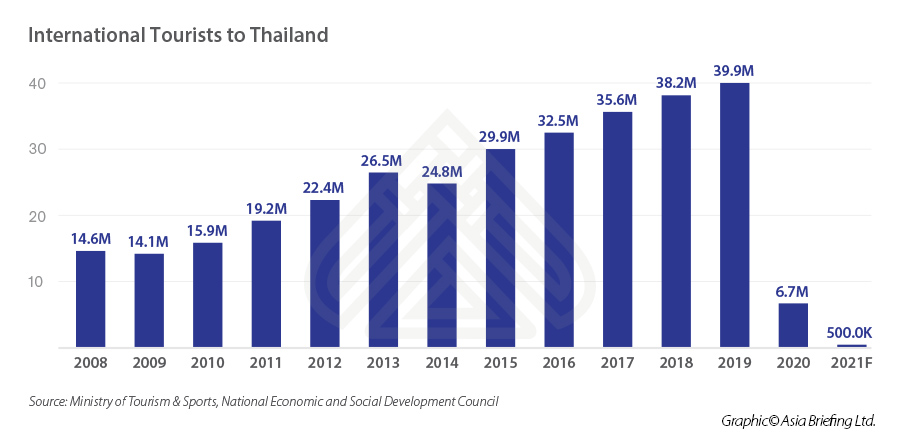Thailand Approves Latest Stimulus Package to Sustain Consumer Confidence
Thailand’s cabinet has approved its latest stimulus package, valued at 140 billion baht (US$4.5 billion), aimed at supporting the economy amid a resurgence in COVID-19 cases.
These latest measures will be implemented from July to December 2021, and include cash handouts to welfare card holders, cash rebates, and co-payments for consumer purchases. The package comes as part of a bigger 255 billion baht ($8.2 billion) approved by the cabinet in May. Some 85 billion baht (US$2.7 billion) was already spent as cash transfers, 20 billion baht (US$641 million) in soft loans, and 10 billion baht (US$320 million) for utility subsidies.Meanwhile, Thailand’s state planning agency has cut the country’s 2021 growth outlook to between 1.5 percent to 2.5 percent from 2.5 percent to 3.5 percent due to this third outbreak of the pandemic.
What is available in the latest stimulus package?
The government hopes this package will cover 51 million people and help sustain purchasing power.
Co-payments for consumer purchases
Under this plan, named Khon La Khrueng, 93 billion baht (US$2.7 billion) has been allocated for co-payments for consumer purchases. The government will subsidize registered individuals who make purchases for general goods, and food and drink, at participating stores, capped at 3,000 baht (US$95) each.
Approximately 31 million people can benefit from this scheme.
Cashback measure
The Ying Chai Ying Dai scheme offers cashback e-vouchers, focusing on middle and high-income earners, for the purchase of food, services, and products through the government’s e-wallet application.
The cashback rate is between 10 to 15 percent with a maximum limit of 7,000 baht (US$223). This means each participant must spend between 46,000 baht (US$1,468) and 70,000 baht (US$2,234) before they receive the maximum cashback rate. Some four million people are eligible for this scheme.
Cash handouts
Around 13.6 million low-income earners who are holders of state welfare cards will be eligible to receive 200 baht (US$6.38), per person, per month, for the period July to December 2021. Further, an additional 2.5 million people who have special needs will receive the same amount in the same period.
Tourist numbers revised again
The Tourism Authority of Thailand (TAT) has reduced its projection for the total number of tourist arrivals for 2021. From the initially projected five million tourists, this has been revised to three million.
The TAT is still forging ahead with its plans to allow fully vaccinated tourists to enter ‘sandbox areas’, beginning with Phuket, without the need for quarantine, on July 1, 2021. Although, there will be a 14-day period in which tourists will not be allowed off the island. In October, the TAT plans to implement a similar scheme in nine other provinces popular among tourists.
The country’s National Economic and Social Development Council stated that the tourism sector may not return to pre-pandemic levels before 2026, which will impact over seven million workers.
Thailand has grown more reliant on foreign visitors in the past decade. Prior to the pandemic, Thailand would receive some 40 million international tourists annually, contributing around US$64 billion to the economy, or 20 percent of the national GDP.
About Us
ASEAN Briefing is produced by Dezan Shira & Associates. The firm assists foreign investors throughout Asia and maintains offices throughout ASEAN, including in Singapore, Hanoi, Ho Chi Minh City, and Da Nang in Vietnam, Munich, and Esen in Germany, Boston, and Salt Lake City in the United States, Milan, Conegliano, and Udine in Italy, in addition to Jakarta, and Batam in Indonesia. We also have partner firms in Malaysia, Bangladesh, the Philippines, and Thailand as well as our practices in China and India. Please contact us at asia@dezshira.com or visit our website at www.dezshira.com.
- Previous Article Russian Outbound Investment into ASEAN & Southeast Asia
- Next Article Singapore to Increase Port Dues Rates from 2022











